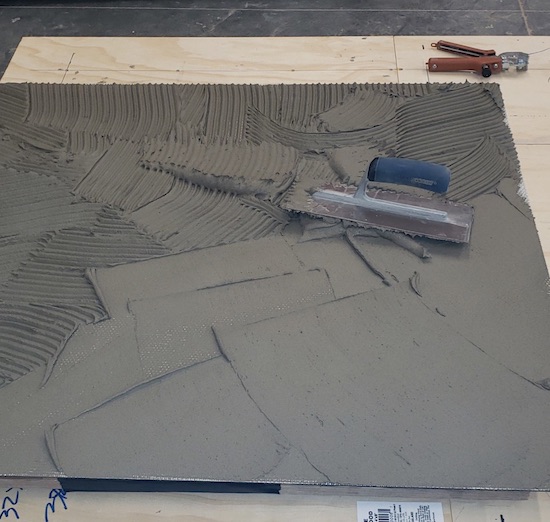QUESTION
I am wondering about clarification to some wording in ANSI A108.1A. Specifically, in section 2.0, it mentions “Mix ratios can vary depending on local materials.” In section 2.2.1 it says one-part cement and five-parts damp sand. Would a one-part cement and a three-parts damp sand work? A 1:6 ratio? Or am I misunderstanding the wording?
ANSWER
Thanks for reaching out to the NTCA with a great question. Mix ratios for our mortar beds, leveling coats and scratch coats are critical to the overall success and longevity of our tile installations.
The ANSI 108.1A reference is for Ceramic Tile in the Wet-Set method with Portland Cement Mortar. It can alternatively be used for ANSI 108.01B, as long as the mortar bed is properly cured. Section 2.0 covers mortar mixes. Subsection 2.2 covers mortar for floors: 2.2.1 specifies mortar bed mix for the FLOOR.
The ratio for a standard mortar bed floor is the same for either a fresh-set installation or a cured mortar bed: One-part cement, five-parts damp sand and up to 1/10 part lime. I show my crew this ratio by using five-gallon buckets: one bucket = 47# bag of Portland cement, with five buckets of damp sand.
There have been occasions when the closest sand supplier may have sand that is either finer or coarser than the 16 mesh graded sand called for in the ANSI specification. So ANSI allows the installer to adjust the ratio of cement to sand to accommodate these regional differences. Sometimes testing may be necessary to find the correct sand to cement ratios if the recommended sand mesh is not available.
You mention a one-part cement to three-parts sand ratio. This ratio is used in section 2.1.1 for wall float mixes in conjunction with Type S or M cement, which already is blended with lime. This mix ratio is only for mortar bed WALL installation and NOT recommended for floor mortar beds.
The use of more than 1/10 part of lime in floor mortar mixes causes a low compressive strength mortar bed for floors. This is not typically a problem for walls, since they are not subjected to the same compressive stresses as floor installations are.
Using one-part cement to three-parts sand for a floor mortar bed is too rich of a mix, and will lead to a brittle, cracked and overall weak floor mortar bed.
You further ask about a one-part cement to six-parts damp sand ratio. This would result in a low strength, unstable mortar bed.
ANSI standards for floor mortar bed mixes are as follows: the one-part cement, five-parts damp sand ratio is for all standard floor mortar beds. Use one-part cement to four-parts damp sand for shower receptors.
If you are having difficulty in finding the correct components to site blend your own mortar beds, many of the major setting-material manufacturers that have pre-blended, floor/deck mud available.







